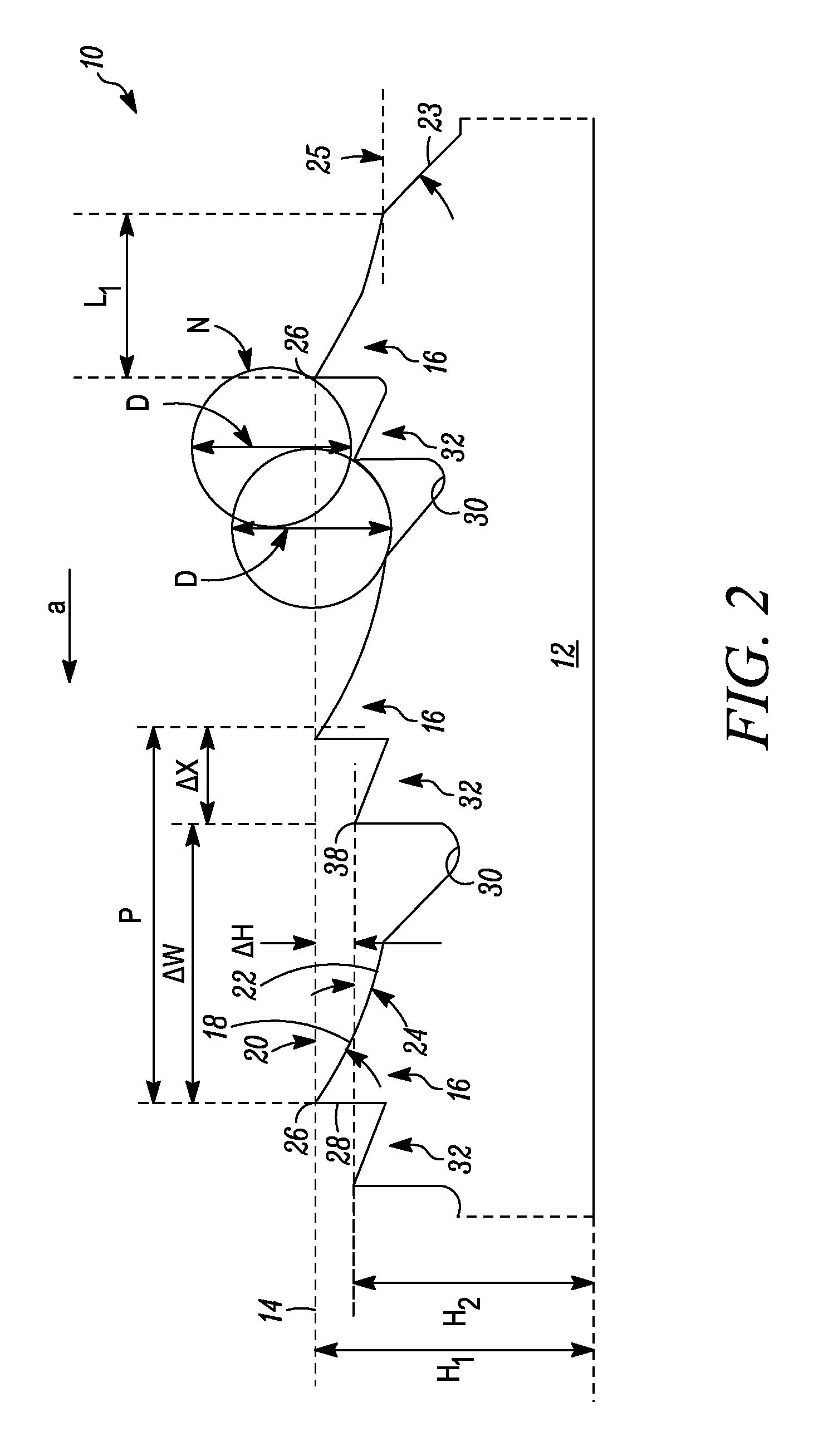Saw blade with feed limiter
a technology of limiter and blade, which is applied in the field of blades with chip limiter, can solve the problems of affecting the overall and affecting the cutting efficiency of the blad
- Summary
- Abstract
- Description
- Claims
- Application Information
AI Technical Summary
Benefits of technology
Problems solved by technology
Method used
Image
Examples
Embodiment Construction
[0034]In FIG. 1, a first embodiment of a reciprocating saw blade is indicated generally by the reference numeral 10. The saw blade 10 is usable in a reciprocating saw. The saw blade 10 comprises a generally elongated blade body 12 having a back edge 13 and a cutting edge 14 extending along a cutting portion of the blade body 12 on an opposite side of the blade body 12 from the back edge 13 and defined by a plurality of cutting teeth 16, in this embodiment a repeating pattern of teeth. Each tooth 16 includes a primary clearance surface 18 defining a primary clearance angle 20 between the primary clearance surface 18 and a plane parallel to the cutting edge 14, a secondary clearance surface 22 defining a secondary clearance angle 24 between the secondary clearance surface and a plane parallel to the cutting edge 14, a tip 26, a rake face 28 located on the opposite side of the tip 26 relative to the primary clearance surface 18, and a gullet 30. In other exemplary embodiments, such as ...
PUM
| Property | Measurement | Unit |
|---|---|---|
| clearance angle | aaaaa | aaaaa |
| relief angle | aaaaa | aaaaa |
| clearance angles | aaaaa | aaaaa |
Abstract
Description
Claims
Application Information
 Login to View More
Login to View More - R&D
- Intellectual Property
- Life Sciences
- Materials
- Tech Scout
- Unparalleled Data Quality
- Higher Quality Content
- 60% Fewer Hallucinations
Browse by: Latest US Patents, China's latest patents, Technical Efficacy Thesaurus, Application Domain, Technology Topic, Popular Technical Reports.
© 2025 PatSnap. All rights reserved.Legal|Privacy policy|Modern Slavery Act Transparency Statement|Sitemap|About US| Contact US: help@patsnap.com



